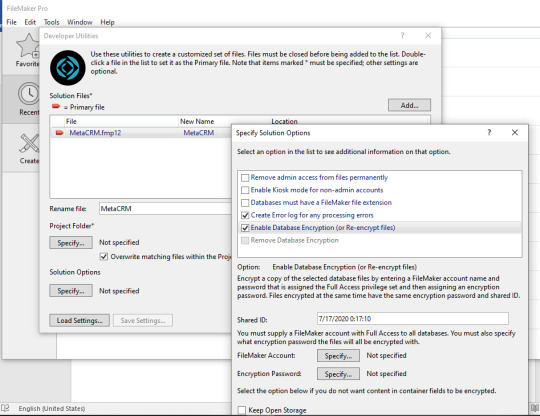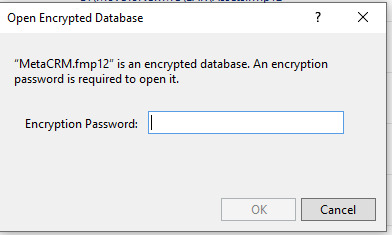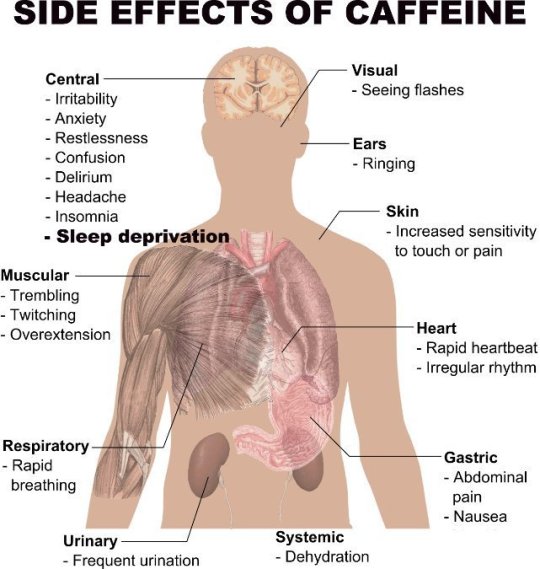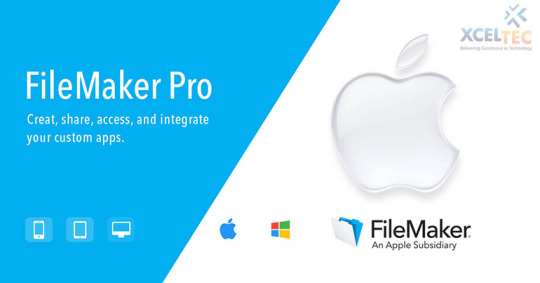#FileMaker Solutions
Explore tagged Tumblr posts
Text
FileMaker Custom Development: Create Robust Custom Applications with Kbizsoft
Discover how Kbizsoft’s expert FileMaker custom development services can help you design tailored, robust applications. From idea to implementation, we deliver solutions that enhance productivity and efficiency. To learn more about our custom FileMaker development process contact us today.
#FileMaker Development#Custom FileMaker Applications#FileMaker Solutions#FileMaker Customization#FileMaker App Development#Custom Software Development#Robust Custom Applications#FileMaker Experts#FileMaker Development Services#KBizSoft FileMaker Solutions#Database Development#Business App Development#FileMaker Solutions for Business#FileMaker Developers#FileMaker Application Design#develop#game development#marketing#mobile app development#personal development#software development#technology#web development
1 note
·
View note
Text
Expert Software Development Services in South Bend IN - Acolyte Applications specializes in custom app development & maintenance services for non-profits, educators, and mission-focused businesses and excels as a trusted claris filemaker developer. Contact us today for tailored solutions!
0 notes
Text
TELEVISION SHOW MANAGER SOFTWARE - A FILEMAKER & .NET SOLUTION
Executive Summary
Mindfire Solutions delivered key software systems for building Live TV shows for a retail shopping TV network. The primary business objective of the complete software was to facilitate multiple different operations (activities and communications) to air a show successfully on Live TV. Mindfire played its part in building systems for Run-up and Run-down operations, integrating them with Show Planning, Production Outline Items, Media Server, and Rundown Live Server. This Desktop and Web enabled system includes services like data-synchronization between multiple databases using ODBC connections, multiple-user setup, Active Directory login services, and printing/emailing of reports.

About Our Client
Client: Confidential
Location: USA
Industry: Media & Entertainment
Business Situation
The client firm’s customer, a Retail Shopping TV Network company, didn’t have a single software solution for Run-up or Run-down show-production processes. They were incredibly manual in how they managed their Show Production process. As a result, they were extremely dependent on emails and phone calls to send requests, to receive request updates, and to communicate status of multiple aspects. They operated in a highly volatile work environment, but with ineffective infrastructure. Overwhelmed by the situation, the customer certainly needed a solution to manage their workflows for close to 9000 shows they were to produce each year.

Technologies
Oracle 10g, FileMaker Pro 10 Adv, FileMaker 10 Server, 360Works tools, C#.Net, SQL Server 2005
Download Full Case Study
1 note
·
View note
Text
Exploring FileMaker’s Interface Design and Layout Tools
The user interface plays a crucial role in the design of any application, and it must be both user-friendly and have a modern aesthetic "look and feel." FileMaker is a pivotal relational database application that provides a powerful combination of a database engine and a comprehensive set of UI design tools. These tools enable developers to create layouts with exceptional efficiency, thanks to their intuitive drag-and-drop features, which surpass alternative options in terms of both speed and ease of use.
The user interface holds immense importance in the design of any application, and needs to be user-friendly with a modern aesthetic “look and feel”. FileMaker stands as a pivotal relational database application, offering a potent blend of a database engine and comprehensive UI design tools. These tools empower developers to construct layouts with remarkable efficiency, thanks to intuitive drag-and-drop features that outpace alternatives in terms of speed and simplicity.
Layout and Tools Within FileMaker, the layout feature lets you create personalized screen designs, tailored to specific needs. The layout assistant aids in selecting layouts across device formats. Depending on the devices used in the business, layout stencils for computers, touchscreens, and printers can be selected. The application also provides options for crafting print layouts, including labels, envelopes, and reports. Additionally, list and table views can be instantly created. Associated tools can be effortlessly integrated or added to the layout to facilitate this process. Elements such as text fields, buttons, images, tabs, and slider panels can be easily dragged and dropped from the toolbar.
Charts FileMaker’s chart control simplifies the creation of various chart types, such as pie charts, area charts, and bar charts. These charts can be swiftly configured to represent backend data. The chart inspector offers an array of formatting options, allowing users to customize the type, category labels, legends, and data. These charts can be quickly generated from the table view.
Web Viewer The web viewer control can easily display webpages within the FileMaker application. It is highly customizable, capable of showcasing web pages based on the data within the application. For example, it can display a company’s website or show a map based on addresses stored in the application. Advanced capabilities also allow integration with JavaScript.
Inspector The inspector, found in the toolbar, gives you the ability to modify properties of objects added to the layout. It encompasses four main sections: a. Position: Allows precise arrangement and alignment of objects. b. Styles: Customization of themes and styles. c. Appearance: Encompasses formatting options for graphics, text, paragraphs, and tabs. d. Data: Involves data binding, control style, and data formatting options.
Objects Pane With Objects pane, you can easily drag & drop fields and search objects on layout. You can also manage the placement of fields on the layout.
Add-ons FileMaker offers pre-built functional modules known as add-ons, provided by Claris, which can be seamlessly integrated into your solution. These add-ons come complete with tables, fields, scripts, and layout elements such as buttons, headers, and footers. They significantly expedite development by enhancing efficiency in managing addresses, calendars, action items, and more.
Themes FileMaker includes built-in themes that can be applied to the overall layout and objects within it, including labels, buttons, and portals. These themes can be tailored to specific needs, allowing the application of relevant styles and ensuring consistency throughout the FileMaker solution. In conclusion, FileMaker offers a rapid application low code platform to create great User Interfaces. Utilizing FileMaker’s layout design options and tools significantly enhances application design. Themes, add-ons, and charts collectively contribute to delivering an intuitive user experience. MetaSys has certified FileMaker professionals who have experience in building apps for clients across different sectors. To know more about our capabilities, visit https://www.metasyssoftware.com/technologies/filemaker/
0 notes
Text
Excel, Word, Access, Outlook
Previously on computer literacy: A Test For Computer Literacy
If you’re a computer programmer, you sometimes hear other programmers complain about Excel, because it mixes data and code, or about Word, because it mixes text and formatting, and nobody ever uses Word and Excel properly.
If you’re a computer programmer, you frequently hear UX experts praise the way Excel allows non-programmers to write whole applications without help from the IT department. Excel is a great tool for normal people and power users, I often hear.
I have never seen anybody who wasn’t already versed in a real programming language write a complex application in an Excel spreadsheet. I have never seen anybody who was not a programmer or trained in Excel fill in a spreadsheet and send it back correctly.
Computer programmers complain about the inaccessibility of Excel, the lack of discoverability, the mixing of code and data in documents that makes versioning applications a proper nightmare, the influence of the cell structure on code structure, and the destructive automatic casting of cell data into datatypes.
UX experts praise Excel for giving power to non-programmers, but I never met a non-programmer who used Excel “properly”, never mind developed an application in it. I met non-programmers who used SPSS, Mathematica, or Matlab properly a handful of times, but even these people are getting rarer and rarer in the age of Julia, NumPy, SymPy, Octave, and R. Myself, I have actually had to learn how to use Excel in school, in seventh grade. I suspect that half of the “basic computer usage” curriculum was the result of a lobbying campaign by Microsoft’s German branch, because we had to learn about certain features in Word, Excel, and PowerPoint on Windows 95, and non-Microsoft applications were conspicuously absent.
Visual Basic and VBS seemed like a natural choice to give power to end users in the 90s. People who had already used a home computer during the 8-bit/16-bit era (or even an IBM-compatible PC) were familiar with BASIC because that was how end-users were originally supposed to interact with their computers. BASIC was for end users, and machine code/compiled languages were for “real programmers” - BASIC was documented in the manual that came with your home computer, machine code was documented in MOS data sheets. From today’s point of view, programming in BASIC is real programming. Calling Visual Basic or .Net scripting in Excel “not programming“ misrepresents what modern programmers do, and what GUI users have come to expect after the year 2000.
Excel is not very intuitive or beginner-friendly. The “basic computer usage” curriculum was scrapped shortly after I took it, so I had many opportunities to observe people who were two years younger than me try to use Excel by experimenting with the GUI alone.
The same goes fro Microsoft Word. A friend of mine insists that nobody ever uses Word properly, because Word can do ligatures and good typesetting now, as well as footnotes, chapters, outline note taking, and so on. You just need to configure it right. If people used Word properly, they wouldn’t need LaTeX or Markdown. That friend is already a programmer. All the people I know who use Word use WYSIWYG text styling, fonts, alignment, tables, that sort of thing. In order to use Word “properly“, you’d have to use footnotes, chapter marks, and style sheets. The most “power user” thing I have ever seen an end user do was when my father bought a CD in 1995 with 300 Word templates for all sorts of occasions - birthday party invitation, employee of the month certificate, marathon completion certificate, time table, cooking recipe, invoice, cover letter - to fill in and print out.
Unlike Excel, nobody even claims that non-programmer end users do great things in Word. Word is almost never the right program when you have email, calendars, wikis, to-do lists/Kanban/note taking, DTP, vector graphics, mind mapping/outline editors, programmer’s plain text editors, dedicated novelist/screenwriting software, and typesetting/document preparation systems like LaTeX. Nobody disputes that plain text, a wiki, or a virtual Kanban board is often preferable to a .doc or .docx file in a shared folder. Word is still ubiquitous, but so are browsers.
Word is not seen as a liberating tool that enables end-user computing, but as a program you need to have but rarely use, except when you write a letter you have to print out, or when you need to collaborate with people who insist on e-mailing documents back and forth.
I never met an end user who actually liked Outlook enough to use it for personal correspondence. It was always mandated by an institution or an employer, maintained by an IT department, and they either provided training or assumed you already had had training. Outlook has all these features, but neither IT departments nor end users seemed to like them. Outlook is top-down mandated legibility and uniformity.
Lastly, there is Microsoft Access. Sometimes people confused Excel and Access because both have tables, so at some point Microsoft caved in and made Excel understand SQL queries, but Excel is still not a database. Access is a database product, designed to compete with products like dBase, Cornerstone, and FileMaker. It has an integrated editor for the database schema and a GUI builder to create forms and reports. It is not a networked database, but it can be used to run SQL queries on a local database, and multiple users can open the same database file if it is on a shared SMB folder. It is not something you can pick up on one afternoon to code your company’s billing and invoicing system. You could probably use it to catalogue your Funko-Pop collection, or to keep track of the inventory, lending and book returns of a municipal library, as long as the database is only kept on one computer. As soon as you want to manage a mobile library or multiple branches, you would have to ditch Access for a real SQL RDBMS.
Microsoft Access was marketed as a tool for end-user computing, but nobody really believed it. To me, Access was SQL with training wheels in computer science class, before we graduated to MySQL and then later to Postgres and DB2. UX experts never tout Access as a big success story in end-user computing - yet they do so for Excel.
The narrative around Excel is quite different from the narrative around Yahoo Pipes, IFTTT, AppleScript, HyperCard, Processing, or LabView. The narrative goes like this: “Excel empowers users in big, bureaucratic organisations, and allows them to write limited applications to solve business problems, and share them with co-workers.”
Excel is not a good tool for finance, simulations, genetics, or psychology research, but it is most likely installed on every PC in your organisation already. You’re not allowed to share .exe files, but you are allowed to share spreadsheets. Excel is an exchange format for applications. Excel files are not centrally controlled, like Outlook servers or ERP systems, and they are not legible to management. Excel is ubiquitous. Excel is a ubiquitous runtime and development environment that allows end-users to create small applications to perform simple calculations for their jobs.
Excel is a tool for office workers to write applications to calculate things, but not without programming, but without involving the IT department. The IT department would like all forms to be running on some central platform, all data to be in the data warehouse/OLAP platform/ERP system - not because they want to make the data legible and accessible, but because they want to minimise the number of business-critical machines and points of failure, because important applications should either run on servers in a server rack, or be distributed to workstations by IT.
Management wants all knowledge to be formalised so the next guy can pick up where you left off when you quit. For this reason, wikis, slack, tickets and kanban boards are preferable to Word documents in shared folders. The IT department calls end-user computing “rogue servers“ or “shadow IT“. They want all IT to have version control, unit tests, backups, monitoring, and a handbook. Accounting/controlling thinks end-user computing is a compliance nightmare. They want all software to be documented, secured, and budgeted for. Upper management wants all IT to be run by the IT department, and all information integrated into their reporting solution that generates these colourful graphs. Middle management wants their people to get some work done.
Somebody somewhere in the C-suite is always viewing IT as a cost centre, trying to fire IT people and to scale down the server room. This looks great on paper, because the savings in servers, admins, and tech support are externalised to other departments in the form of increased paperwork, time wasted on help hotlines, and
Excel is dominating end-user computing because of social reasons and workplace politics. Excel is not dominating end-user computing because it is actually easy to pick up for end-users.
Excel is dominating end-user computing neither because it is actually easy to pick up for non-programmers nor easy to use for end-users.
This is rather obvious to all the people who teach human-computer interaction at universities, to the people who write books about usability, and the people who work in IT departments. Maybe it is not quite as obvious to people who use Excel. Excel is not easy to use. It’s not obvious when you read a book on human-computer interaction (HCI), industrial design, or user experience (UX). Excel is always used as the go-to example of end-user computing, an example of a tool that “empowers users”. If you read between the lines, you know that the experts know that Excel is not actually a good role model you should try to emulate.
Excel is often called a “no code“ tool to make “small applications“, but that is also not true. “No Code” tools usually require users to write code, but they use point-and-click, drag-and-drop, natural language programming, or connecting boxes by drawing lines to avoid the syntax of programming languages. Excel avoids complex syntax by breaking everything up into small cells. Excel avoids iteration or recursion by letting users copy-paste formulas into cells and filling formulas in adjacent cells automatically. Excel does not have a debugger, but shows you intermediate results by showing the numbers/values in the cells by default, and the code in the cells only if you click.
All this makes Excel more like GameMaker or ClickTeam Fusion than like Twine. Excel is a tool that doesn’t scare users away with text editors, but that’s not why people use it. It that were the reason, we would be writing business tools and productivity software in GameMaker.
The next time you read or hear about the amazing usability of Excel, take it with a grain of salt! It’s just barely usable enough.
128 notes
·
View notes
Text
theFMStudio
The FMStudío is an Australian professional services company that solves problems. Our dedicated & talented team provide simply powerful solutions to these problems, based on the FileMaker development platform.
Website: https://www.filemakerstudio.com.au
Address: 47 Mahratta Ave, Wahroonga, NSW, 2076, Australia
Phone Number: 02 9487 8066
Contact Email: [email protected]
Business Hours: Mon - Fri: 09:00 AM – 05:00 PM
1 note
·
View note
Text
FileMaker Software Developing
FileMaker is a cross-platform relational database application from Claris International, a subsidiary of Apple Inc. FileMaker Application (filemaker applicatie) integrates a database engine with a graphical user interface (GUI) and security features, allowing users to modify the database by dragging new elements into layouts, screens, or forms. FileMaker Customization (filemaker maatwerk) menus with FileMaker Pro Advanced, you can create custom menus for your database solutions. You can add, edit, duplicate, or delete menus and menu items in many ways with our support.
FileMaker WebDirect provides your extended users with desktop-style interaction with your FileMaker app through a web browser on a desktop, laptop or mobile phone. We develop native apps and affordable FileMaker Go apps (iOS only) for any type of task. FileMaker Developer(filemaker ontwikkelaar) does all of this job perfectly.
Loggix is the FileMaker application and supports software development company.
________________________________________
FileMaker is the most complete low-code platform for building business solutions that generate real business value.
We build custom software and also doing custom software development(maatwerk softwareontwikkeling)
Low cost, low code, and framework based
________________________________________
We work with FileMaker, FileMaker Development(filemaker ontwikkeling) the world's most acclaimed software platform for 'Rapid Application Development.
1 note
·
View note
Text
RETAIL BUSINESS SUITE
Executive Summary
Mindfire Solutions has been the technical development partner of the client in developing a number of software products and add-ons. The client provides customized business solutions to serve the varied needs of businesses in retail. The products/add-ons are aimed at providing strong informational infrastructures to enable companies to improve their workflows and in turn run their businesses better. As the software development partner, the team at Mindfire has contributed towards developing the products and add-ons from scratch, upgrading them from time-to-time and customizing solutions to serve the varied needs of the customers. The products can be hosted either on the local server or the cloud with access to data made available on-the-move on desktops, laptops, tabs & smartphones.

About our Client
Client Name : Confidential
Industry : Retail Solution Provider
Location : USA
Technologies
Filemaker, PHP
Download Full Case Study
0 notes
Text
A Step-by-Step Guide to Encryption at Rest (EAR) in FileMaker
Security plays a vital role in any software application. Most of the time, standard approaches, like Startup login, encryption of password, etc., are followed. 'Manage Security' section of FileMaker provides different types of settings to manage various levels of access as well as privileges to the logged-in user.
Encryption at Rest goes beyond this by providing security to the FileMaker file when it is physically stored on a disk. Encrypting a database provides additional security to your FileMaker application.
What you need?
To encrypt one or more database files in FileMaker, you will need:
FileMaker account with [Full Access] privilege
Encryption Password
A shared ID
Steps to follow:
To encrypt a database, you should have the required FileMaker files stored locally. If the files are hosted on the server, you will need to unhost them, perform EAR, and then host again.

In FileMaker Pro client, go to menu 'Tools >> Developer utilities'.
Add the files you need to perform encryption on. In the case of a multi-file solution, add all the required files.
Specify one of the files as Primary.
Select the Project folder, where you would like to place the encrypted files after EAR is completed.
Under Specify Solutions options, select the 'Enable Database Encryption' option.
This will automatically select the option above 'Create Error log for any processing errors'. This log is important (but optional) since it creates a log file in the EAR folder. This file will let us know if the encryption was successful or if there were any errors. In the case of multiple files, the encryption status of each file is logged.
Specify a Shared ID; it links multiple encrypted files.
Specify a FileMaker Account with [Full Access] privilege. This will be for the Primary file specified above. If the other files have different [Full Access] password, then it will be prompted during the EAR process.
For the files, which are linked with each other via 'External data Source' and have different [Full Access] credentials, the login may be prompted more than one time for the same file.
Specify the encryption password. In case of multiple files, if the files' encryption passwords and shared IDs match, the user will not be prompted again for the encryption password. Enter a password hint, if needed.
The option 'Keep 'Open Storage' is checked if you do not want the container field data to be encrypted.
Click 'OK' to start the encryption
After EAR completion:
After the EAR process is completed, check the log file for encryption status.
In the case of external storage container, the EAR process will create the same folder structure for each file. Container data will be encrypted/not encrypted depending on the EAR option specified above.
Users will be prompted for encryption password when opening the files via FileMaker Pro or FileMaker Go locally.

When the files are hosted on the FileMaker Server or FileMaker Cloud, users will be prompted for the encryption password before hosting. This password can be saved to automatically open encrypted files when the server restarts.
IMPORTANT When performing EAR on hosted files, copy the hosted files and related remote container folders locally where you would be performing the EAR. The remote container data is stored under ‘RC_Data_FMS’ folder under databases folder on server. In this ‘RC_Data_FMS’ folder, there is separate folder for each database that is hosted on the server. When copying remote container folders for EAR, you need to copy the folder which is inside each database folder to your local folder. If this is not done properly, it will result in container data not encrypting and also will show errors in the log file, especially when you are working with secured storage.
Remove Database encryption:
You can remove database encryption applied to a file or a set of files. It is a similar process as that of encryption.
Under 'Tools >> Developer Utilities', add the files you want to remove encryption from, select 'Remove Database Encryption' option. You will need the Encryption password and [Full Access] login details of the FileMaker files.

Encryption at Rest is an essential aspect of data security in FileMaker. By following the above steps, you can encrypt your FileMaker database to provide an additional layer of security. If you have any doubts or need assistance, reach out to the team of experienced and certified FileMaker experts at MetaSys Software, your custom software development company.
#filemaker india#filemaker pro business solutions#filemaker business solutions#filemaker pro training center in india
0 notes
Text
A Stage Manager’s Top 10 New Year’s Resolutions
The beginning of the new year is a time for a fresh start and an opportunity for new beginnings. New Year’s resolutions can help us focus on what we want to do better and/or achieve over the next twelve months. With that in mind, below I’ve put together a top 10 list of New Year’s resolutions for stage managers to consider. These are things for us all to keep in mind throughout the year, ways we can continue to grow and work towards being the best stage managers, leaders and people we can be.

1. Be more proactive than reactive. Anticipate problems or issues and find solutions before they even become a concern. This is challenging, as we have so much on our plate to manage each day, it can be hard to see those few extra steps down the road. But if we spend a few minutes each day thinking farther along the process, any potential rough spots along the road from rehearsals through closing night can be smoothed out before anyone knows there was even a hint of an issue.

2. Be more compassionate. Try to see issues from the other person’s point of view. In this way, annoying complaints and seemingly petty concerns will be understood and solved easier and with less stress and strife. By simply understanding more, we create more trust and a better work environment.

3. Take care of yourself. We focus on taking care of others. Don’t forget to make time for yourself. Create some space to relax, spend time with friends, exercise… all of the things we usually sacrifice while working on a show. We matter too and the same way we invest in the welfare of the company, we can take care of ourselves.

4. Ask for help when you need it. You are not a super hero, as much as stage managers try to be. If you have to tape a complicated floor, ask for some extra hands. Need to change rehearsal studios, ask for help moving everything. Have a question or concern about a union issue, reach out and call. You are not alone. The theatre, producer and you have resources you can call on when needed. Even Superheros can’t always do it alone (see the Avengers or Justice League!).

5. Sleep. Of all the sacrifices we make, this is probably the worst. We need sleep to function at our best. It helps our brains and bodies. Instead of staying at the theater late to update all your paperwork or rewrite all those line notes, get some shut eye to recharge and refresh. You’ll be more efficient and effective because of it.

6. Use sick days. You are allowed to be sick too. You are human. And it’s better to take a sick day than get the cast infected too. There is also that little quirk in the AEA Production Contract where you can only get paid out 11 of your 13 sick days, so when you get that long run, you gotta take at least two sick days a year anyway! You can empower your assistants, find a sub and know that you will be covered. And if you are so valuable that you can't get sick or the show falls apart, maybe that's a good time to ask for a raise!

7. Learn a new hard skill. Those hard skills such as dance vocabulary, computer skills and reading music can be learned in a class, from a book or online. 2018 could be just the right time to add to your skill set by taking a CPR/First Aid class or learning Filemaker or First Draft. Not only is it fun, but it makes you a more valuable stage manager.

8. Cut down on the caffeine and sugary snacks. There are many of us that use coffee or diet coke for a boost or grab that snickers bar for a quick jolt of energy. However, too much can result in dehydration, headaches and more. When in tech for The Little Mermaid, Disney producer Thomas Schumacher kept nuts and dried fruit on his tech table so folks would have real energy snacks available. I’m not saying give up your go to beverage or snack, rather work towards a healthier balance. This will help us be better in the long term. And we all want long careers, right.

9. Be greener. Unfortunately, we use a lot of paper in our profession. Let’s try to find ways to cut back, reduce and/or reuse paper more. The Broadway Green Alliance has done great work on this front. See their website. One of the stage managers on Doctor Zhivago had a method for using “dirty paper.” Any paper that was printed on only one side was saved in a special pile and the daily in/out sheet was always printed on the back.

10. Remember why you love your job! It’s easy to get caught up in all the day to day minutiae of running a show. Everyone needs something and herding all those cats is challenging. If you step back a moment, you can really appreciate the wonderful and amazing job we are privileged to do. We get to work on PLAYS! No cubicles or time clocks, instead we get song and dance all day long! When working on An Evening with Patti LuPone and Mandy Patinkin, I had to pinch myself to realize that I was working with icons that I grew up admiring and dreaming about being in the theatre with.

11. BONUS CHALLENGE: Try to see a show and try NOT see the tech elements. This is a real tough one, but worth the effort. Can you get lost in a show enough to not picture calling it or timing the quick changes or re-organizing the scene shifts? Try to give yourself this gift and enjoy the theatre like you did before it was your vocation. I try and fail at this often, but when it works, it’s a very special night of theatre.

Whatever your personal resolutions are, we wish you all the best with them and wish everyone a very happy new year!

#smlife#smlove#smblr#techblr#stagemanager#stagemanagement#broadway#broadway stage management symposium#newyear#resolutions#ysm2020#smproblems
13 notes
·
View notes
Text
DRIVING CANADIAN GROWTH AND INNOVATION: FIVE CHALLENGES HOLDING BACK SMALL AND MEDIUM-SIZED ENTERPRISES IN CANADA
Research Summary: “Driving Canadian Growth and Innovation: Five Challenges Holding Back Small and Medium-Sized Enterprises in Canada” By Dan Herman & Anthony D. Williams, deepcentre: Centre for Digital Entrepreneurship + Economic Performance (2013)
At Issue: Small and medium-sized enterprises (SMEs), which comprise over 99 percent of businesses in Canada, are commonly portrayed as the backbone of the national economy. However, only a small minority of companies, approximately 4 to 7 percent, demonstrate sufficient growth to make a meaningful contribution to job creation and overall GDP. It is imperative for policy makers to mitigate or remove the prevailing impediments facing small businesses, such that a larger share of SMEs may embark upon growth trajectories that enable substantial contributions to the national economy.

Research Objective(s): The objectives of this study are to accurately characterize SMEs in Canada, identify key obstacles to their growth, and propose specific recommendations for policy makers to better support the small business economy.
Scope: The study addresses SMEs, defined as companies with fewer than 100 employees, in Canada. In addition to comprising over 99 percent of Canadian companies, SMEs employ more than 6.9 million people and account for nearly 70 percent of private-sector payrolls.
Approach: The authors of this study conducted secondary research by completing a review of more than 23 independent sources.
Findings: Canadian firms lag behind international competitors in adopting productivity-enhancing technologies. In 2006, Canada ranked eleventh among 21 OECD countries in total economic investment in information and communication technologies, down from tenth in 2005 and ninth in 2004. Technology investments by Canadian manufacturers fell by 37 percent between 2000 and 2013. There is a 33 percent technology investment gap between Canadian and U.S. firms, with Canadian SMEs spending 38 percent less on technology than their U.S. counterparts.
Despite the preponderance of service firms among Canadian SMEs, only 12 percent use supply chain management software. Just 4.2 percent of SMEs in Canada qualify as “innovative SMEs” – defined as those that allocate more than 20 percent of investment expenditures to research and Filemaker development. Studies of SMEs in the U.K., Germany, and France indicate that greater adoption of technology by SMEs benefits not only individual companies but also the economy at large. Increased innovation by SMEs results in increased job creation, productivity improvements, and GDP growth.
To enlarge the pool of high-growth, high-impact SMEs in Canada, policy makers are advised to:
(1) Incentivize business growth via tax policy reforms that reward revenue and employment growth;
(2) Promote international expansion of SMEs by (a) facilitating access to export markets and (b) proactively identifying would-be exporters and facilitating their global expansion via management training, export assistance, and export financing;
(3) Build SME management competencies by hosting innovative management mentorship programs and providing incentives for participating in ongoing training;
(4) Promote technology adoption among SMEs by (a) sponsoring collaborative industry-government approaches to financing, (b) engaging in information sharing in order to build the case for technological investment, and (c) emphasizing that technology adoption does not just narrowly benefit knowledge-intensive companies or tech start-ups;
(5) Facilitate more competitive prices for telecommunications services;
(6) Encourage R&D spending by (a) facilitating the development of industry-academic partnerships and (b) providing financing options and commercialization support for SMEs that pursue promising ventures with university partners; and
(7) Improve access to capital for SMEs with high-growth potential by providing conditional loans and matching grants, in order to facilitate private SME investment in technology, training, and R&D.
#Filemaker development#filemaker developer#Filemaker expert#filemaker solutions#filemaker pro#Filemaker Website Developer
0 notes
Text
5 Easy Facts About filemaker solutions Described
ERP software facilitates automation, which saves money and time. It is being adopted by all sort of organizations at a fast lane. ERP means Venture Source Preparation, and makes it possible for storage space, administration and also analysis of information. Suitable for preserving extensive information, ERP software application assist in services to handle data connected to product preparation, shipping & payment, human resources, financials and so on . Also when 100% of the organisations aren't yet counting on ERP, a bulk of them recognize its presence - much as a result of its terrific benefits. Broadly, there are 2 ways of custom software development ERP application - On-premise ERP and Cloud-based ERP On-premise ERP is largely concerning keeping the ERP software application and also linked information in the client company itself. Cloud-based ERP, on the other hand, requires customers to get their software program and also information held on one more server, which comes online. On-premise ERP. As each research company Gartner, the on-premise ERP sector in India is expected to expand at a 17% CAGR - elevating it to $538 million by 2017 from $178 million in 2013. Presently a lot of health facilities, schools, hotels and also hotels, multinational firms as well as banking companies are using ERP. Directly associated to the ROI of organizations, ERP helps with much better resource and data management. And also when India is audio in terms of technically-trained experts, the ERP market is bound to witness outstanding growth. Cloud-/ SaaS-based ERP Execution SaaS-based ERP is more probably being favored by small and also moderate ventures. Gartner's studies mention that reduced price and also faster implementation are the main factors behind this growth. That's since 'Software application as a Solution' based ERP services assist client organizations to implement ERP applications in cloud settings. The ERP software application as well as associated information are centrally held and also accessed via internet. While even big corporations are shifting to cloud-based ERP designs, worries because of data safety, networking issues, and limited modification have held its acceptance-rate so much. Continuous improvements are certain to provide SaaS-based ERP execution the much-needed press in near future. ERP Software Company Like each innovation, the globe of ERP is loaded with tons of solution carriers. The products provided by them vary in a variety of means, including performance, attributes, capacity and so on. Considering the a number of selections business have, option is not just made on the basis of functions but also while remembering business demands as well as budget plan constraints. Small companies For local business houses, Microsoft's ERP solution, i.e. Microsoft Dynamics plays a crucial role. It supplies services for service intelligence as well as reporting, procedures and also human resources, as well as financial as well as supply chain administration. Of the various independent services, Microsoft's Axapta (Characteristics AX) and also Navision (Dynamics NAV) products use amazing distribution and also manufacturing capabilities. These products are widely utilized in the European areas. Microsoft likewise supplies the Wonderful Plains (General Practitioner) ERP remedy that showcases solid Financials capacities. General Practitioner takes pleasure in large acceptability in the USA. Tool Services Epicor and also Infor are both business names that appear in terms of ERP execution for medium-sized organisations. Offering over 20,000 clients in virtually 150 nations, Epicor has robust ERP options for distribution, production, lumber & building, retail as well as numerous a lot more functions. The company's ERP executions have caused a 100% growth in the ROI of various configurations, such as Friendliness, Money, Garments, Medication etc. Epicor has additionally when been recognized for achieving the most affordable Total Cost of Possession (TCO) and also total per individual cost of software application for medium-sized firms. Infor, the 3rd largest ERP maker, has even more than 70,000 customers in 200 countries. It has ERP software program for Item Configuration Monitoring, Customer Relationship Administration, Venture Asset Monitoring, Item Lifecycle Administration as well as numerous other enterprise jobs. Throughout the years, Infor has mostly boosted its service offerings with not simply technologies but essential business acquisitions also. Enterprise-level/ Big Businesses SAP SE (Systems, Applications & Products in Data Processing), known for its SAP ERP services, is the largest organisation software program company. SAP software are mostly used in Europe, Center East, Africa, Latin The U.S.A., Canada, USA, Asia Pacific and Japan. Its software services include ERP systems for taking care of human resources, manufacturing, financials, pay-roll, as well as customer partnership management. Extremely favored by big business houses worldwide, SAP ERP systems are properly combined for the most recent mobile, cloud, and in-memory technologies. Oracle Company, the 2nd largest software firm in the world, is undoubtedly one more highly favored ERP systems company. In sophisticated competitors with SAP SE, Oracle's ERP options are recognized for their effectiveness, information stability and also protection functions. With procurements of PeopleSoft (with JD Edwards) as well as Siebel Systems, Oracle's consumer base consists of some of one of the most reputed global-level companies. It provides ERP options for supply chain management, human funding monitoring and so on . As a result of the fantastic earnings, continual innovations, and a number of various other benefits that ERP applications use, its market is set for a brilliant future! It so makes full feeling for people to undertake this domain name as a profession goal. That's because, the requirement for skilled ERP professionals will absolutely rise as the market will progress. What product to pick? Well, that completely depends upon your expert vision and level of commitment!
0 notes
Text
Chimpkey is a leading data entry automation provider
ChimpKey is a solution that automates the tedious task of data entry for businesses. We specialize in converting PDF documents, such as purchase orders, invoices, and more, into various electronic formats including XML, X.12, CSV, UBL, EDIFACT, and more.
Our process is easy: simply email your PDF documents to our server, and we'll quickly return the files in a format compatible with your chosen order entry, accounting system, or custom-built program. The PDFs can be generated from any program, including Excel, Quickbooks, Simply Accounting, ACCPAC, Business Vision, SAP, Filemaker, or custom-built programs. https://chimpkey.com

1 note
·
View note
Text
Why FileMaker Pro Becoming So Popular for Custom App Development

What is FileMaker Pro?
A cross-platform database application tool called FileMaker Pro was created by an Apple Inc. subsidiary (Claris International). FileMaker Pro combines a database engine with a GUI (Graphical User Interface) that enables users to manage contacts and projects as well as organise data into screens, layouts, and forms. Originally created for Apple computers, FileMaker Pro is now readily accessible on the Windows platform.
The key feature of FileMaker Pro is that non-programmers may use it without any special training. It includes more than 30 integrated starter solutions that enable users or app developers to take care of the crucial work quickly.
History:
FileMaker Pro began out as a Disk Operating System (DOS) application before being primarily developed for the Apple Mac and being made available in April 1985. It has been cross-platform and accessible for Windows and Mac OS since 1992. Initially, FileMaker server runs on Linux servers, but it then only supports Windows and macOS servers. A client version for iOS devices launched in July 2019 and is offered in desktop, server, iOS, and online delivery modes.A FileMaker cloud was introduced in 2016 and currently, a FileMaker becomes so popular for Custom App Development.
FileMaker Pro’s Capabilities & its Features:
Since its debut, FileMaker Pro has been available in a number of iterations, ranging from basic to advanced FileMaker. FileMaker Go is also accessible for iPhone, iPod, and iPad users.
Some of FileMaker Pro’s Key Capabilities Include:
Forming a Custom Database:You can use FileMaker Pro to build a database that can be customised to meet your unique needs..
Creating Reports:As the programme provides capabilities for detailed reporting, we can utilise them to manage and automate user tasks. We can easily generate email reports in Excel or PDF using FileMaker Pro.
Broadcasting Data on the Web:With only a few clicks, users of FileMaker may securely publish their databases online. Users can design surveys, forms for collecting consumer feedback, registration
Sharing the Data:Users of Macs and Windows can safely share data with each other thanks to FileMaker Pro. They are able to share the databases across a network with up to nine more users.
FileMaker Pro typically works with records in fields and is pertinent to forming data into layouts. We can include multiple tables in a single document using FileMaker. The task is done using the modes listed below.
Layout Mode:This model explains how data is present on the screen.
Find Mode: In this mode, records from a table are located.
Preview Mode:This mode provides a preview of the data prior to printing.
Browse Mode:You can allow data to be entered and seen in this mode.
The one advantage of FileMaker Pro is that you only need to enter data once to display it in various ways. We can show some fields and layouts based on user request. These features encourage developers to use FileMaker for their clients' customised applications
Why Choose XcelTec for FileMaker Custom App Development?
It goes without saying that startups and technology are closely related. In the current era, it is expected that startups will use technology to operate; in fact, the majority of these qualities are wholly dependent on technology. Technology has created a terrifying demand for app development. Being a top web and mobile app development company, XcelTec adhere to FileMaker App Developers who created mobile apps that are easily usable and customizable to the needs of the client.
Services We Serve in FileMaker Pro:
FileMaker Pro iPhone App Development
FileMaker Custom Apps
FileMaker iPad App Development
FileMaker Pro Windows Applications
Why Choose XcelTec:
Ability in latest development technological trends
Keep off unplanned costs
Strictly follow the project target & deadlines
The project Scalability is beyond comparison
Resource flexibility
The team is reachable irrespective of time and place
XcelTec Developed POS System with FileMaker Pro
The client approached us about developing an app that controls the POS System in accordance with the recent tax reforms in the Fijian nation. His idea was to handle the software programmes or hardware devices whose primary job is to safeguard an invoice in offline mode and send audit packages to Tax Service in light of recent modifications to the tax system in Fiji. They require a middleware component from a technological standpoint in order to connect the POS system to the secure element and enable standardised communication with the Tax Core Backend API. By providing a stunning, fully-featured POS system that controls the Tax calculation automatically and minimises tax manipulation, XcelTec satisfies all the client's requirements.
Some Features that we integrate into our developed FileMaker POS system
Generate Invoice Automatically
Multiple sales reports complete with graphs and charts.
Simple interface for sale transactions
Easily find items and add them to the order.
Automatic billing counting
Want to Develop a FileMaker App?
The FileMaker app's popularity among users increased overnight. If you're looking for a similar mobile app (for iOS and Windows) for a mall, grocery store, apparel store,
Visit to explore more on XcelTec Ranked as a Top iOS App Development Company by Top App Creators
Get in touch with us for more!
Contact us on:- +91 987 979 9459 | +1 919 400 9200
Email us at:- [email protected]
#Custom App Development#App development#Mobile App Development#FileMaker POS system#mobile app development company#mobile app development team
1 note
·
View note
Link
FileMaker is a great platform to create a CRM solution for businesses as it’s easy-to-use, flexible, customizable, and cost effective. The platform lets you bring together the various components of the customer service and sales processes under one roof.
0 notes
Text
Baseelements filemaker example

Baseelements filemaker example how to#
Baseelements filemaker example software#
Baseelements filemaker example software#
Looking for FM Starting Point free software download: Richard is the Product Manager for FM Starting Point, the popular and most downloaded free FileMaker CRM Starter Solution. Richard has been a frequent speaker at the FileMaker Developers Conference on a variety of topics involving FileMaker for Startups and Entrepreneurs, and client-server integration. He has offices in California, Nevada, and Texas. Richard works closely with RCC’s staff: a team of 30 FileMaker developers and supporting web designers. Richard has been involved with the FileMaker platform since 1990 and has grown RCC into one of the largest top tier FileMaker consultancies worldwide. The course is 60 hours of video content! Transform your business with the FileMaker Platform With 30 years of FileMaker experience and a long time speaker at FileMaker’s Developer Conference, Richard will teach you all the ins and outs of building FileMaker Solutions. Top Rated Course by FileMaker Expert, Richard Carlton.Įxperience Richard’s dynamic and exciting teaching format, while learning both basic, intermediate, and advanced FileMaker development skills. Get up to speed with the FileMaker Video Training Course! Video is an electronic medium for the recording, copying, playback, broadcasting, and display of moving visual media.įileMaker is a cross-platform relational database application from FileMaker Inc.Ĭustomer relationship management, processes implemented to manage a company’s interactions with customers and prospects
Baseelements filemaker example how to#
Questions about Installation, Upgrading, Purchasing or How to make FileMaker work for you in your company to increase ROI.Ĭheck out our daily live stream FileMaker schedule at I personally buy this tool for by team every year.ĭaily Open Q&A with FileMaker Experts. It does a million useful things, including documenting abandoned fields, abandoned layouts, abandoned scripts, etc. Probably the most useful and important diagnostic tool when working on a FileMaker File. 6715 – LiveStream – 07.28.20 – FileMaker Diagnostic Tool – BaseElements – Nicholas Orr

1 note
·
View note